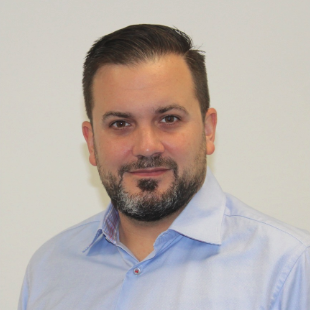Integrating Ecosystems:
How to Support the Development of Software-Defined Vehicles
In the race to build and bring next-generation vehicles to market, efficiency and flexibility matters. Using the right architecture is critical for software-defined vehicles, which are rapidly gaining traction for their ability to deliver increased software reuse, faster integration and time to market. A great example of this trend is Next-Generation Electrical/Electronic (Next Gen E/E) Zonal Architecture, a design approach that calls for broad integration across the many different subsystems in a common architecture.
This focus on integration paves the way for collaborative ecosystems such as DDSTM, AUTOSAR or ROS 2 to be used and optimized for building software-defined vehicles. Being able to leverage the familiar unique capabilities of DDS should not be limited to native development, but should be available across the complete ecosystem. AUTOSAR and ROS 2 toolkits can help provide a rapid start and solid foundation within fully integrated systems, while leveraging the many benefits of data-centric architectures. Being free to develop vehicle architectures using software and hardware from multiple vendors provides a clear advantage, making it easier to maintain compliance with evolving standards and platforms and get access to continuous feature and performance improvements.
When it comes to Next-Gen E/E development, vehicle data connectivity is equally important. Integrated systems must provide flexibility, scalability, compatibility and portability to different hardware components. In addition, rigorous — and continuously evolving — safety and cybersecurity requirements add yet another level of complexity to be addressed.
What is the best approach to modeling and configuration workflows? How do you achieve rapid, scalable communication within embedded, real-time, and safe systems?
Guest Panelists & Speakers
VECTOR
Infineon
Blackberry
Speaker Spotlight
Stefan Rombach
Senior Product Management Engineer
Vector Informatik

Brian Morrison
Chief Technology Officer / Director, Innovation & Technology - Automotive
Infineon Technologies Americas Corp.

Peter Virk
Chief Technology Officer / VP, BlackBerry IVY Product & Ecosystem
Blackberry

Bob Leigh
Senior Director of Market Development, Autonomous Systems
RTI

Pedro Lopez Estepa
Market Development Director, Automotive
RTI

Angel Berrio
Group Product Manager
RTI

08:00 – 08:10 PDT
Opening Remarks
Bob Leigh, Senior Market Development Director, Autonomous Systems, RTI
08:10 – 08:30 PDT
Speaker Session
The Automotive Software Factory
Stefan Rombach, Senior Product Management Engineer at Vector Informatik
The software complexity of modern automotive ECUs requires new development methods and tool environments that support big, distributed development teams. In this talk, Vector presents the vision of an Automotive Software Factory, that enables the development and automatic integration of various kinds of software from OO-designed high-level applications to deeply embedded controller code.
08:30 – 09:10 PDT
Panel Session
Designing the Next Gen E/E Vehicles, The Automotive Software Factory
Moderator: Pedro López Estepa, Director of Automotive, RTI
Speakers: Peter Virk, VP, BlackBerry IVY Product & Ecosystem at BlackBerry and Brian Morrison, Director, Innovation & Technology - Automotive, Infineon Technologies Americas Corp.
This panel will feature:
- The reality behind the next-gen e/e and modern vehicle architectures
- The integration level and role from the OEMs, Tier-1s, and Tier-2s in this transition
- Hardware architecture standardization, how does it affect the overall industry
- Hardware-Software cooperation in order to achieve optimal design cycles
09:10 – 09:30 PDT
RTI Announcement
New Software to Power Next-Generation Vehicles
RTI Presentation, Angel Berrio, Group Product Manager, RTI
Next-generation vehicles will require significant upgrades to traditional vehicle architecture in order to address the major limitations that the automotive industry is facing today. To guarantee the desired level of innovation, software-defined vehicle architectures must provide flexibility, scalability, compatibility and upgradability on different hardware components.
This session will announce new software from RTI that will ease automakers' journey to quickly and flexibly meet the most complicated demands of the automotive market.
Learn how to reduce the cost and risk of solving the complex demands of autonomous and electric vehicles.
 Success-Plan Services
Success-Plan Services